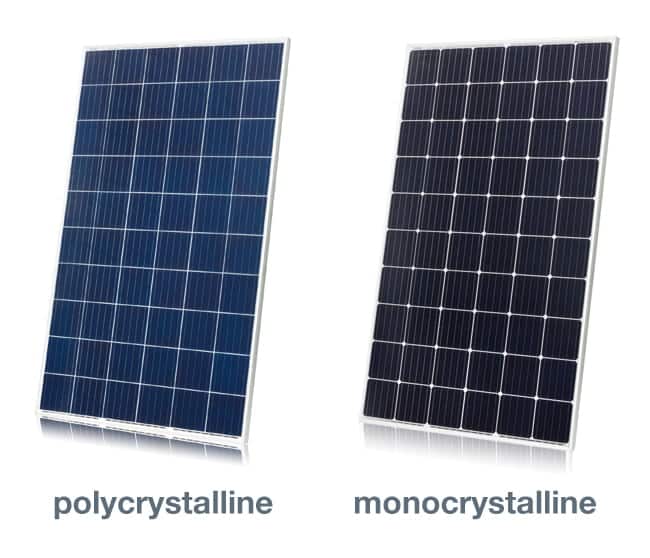
Solar cells for Residential environments can either be monocrystalline (cut from a
single silicon source) or polycrystalline (cut from multiple silicon fragments).
The main difference between the two technologies is the type of silicon solar cell
they use; monocrystalline solar panels have solar cells made from a single crystal of
silicon or ingot, whilst polycrystalline solar panels have solar cells made from many
silicon fragments melted together.
Monocrystalline solar panels have the highest efficiency rates, typically in the 15-
20% range. This high efficiency rate means they produce more power per square
foot, and are therefore very space-efficient.
The composition of these cells is purer so they perform better than similarly rated
polycrystalline solar panels in high heat and lower light conditions, which means they
will produce closer to their rated output in less-than-ideal conditions.
Mono Panels cost more to produce and that higher cost is usually passed on to the
buyer. Mono panels are a bit more expensive than poly panels of the same wattage.
The manufacturing process for mono panels is also more wasteful than manufacture
of Poly panels. Mono panels are cut from square silicon wafers and the corners are
shaved off; mono panels have a uniform black look.
Polycrystalline Solar Panels
Polycrystalline solar cells are blended from multiple silicon sources, (fragments) and
are slightly less efficient.
Smaller bits of silicon are moulded and treated to create the solar cell. This process
is less wasteful because hardly any raw material is thrown out during manufacturing.
The blended makeup of the cells gives poly panels their iconic blue colour. If you
look at them closely, you will see the texture and colour is uneven due to the way the
cells are manufactured.
Polycrystalline solar panels are slightly less efficient than mono panels due to the
imperfections in the surface of the solar cells. They are cheaper to manufacture
which means they cost less for the end-user.
There is a third type of solar technology, called ‘Thin film’ panels, which are usually
deployed for large-scale utility projects and some specialty applications
Thin Film Solar Panels
Thin film panels are created by depositing a thin layer of conductive material onto a
backing plate made of glass or plastic.
Thin-film technology costs less than mono or poly panels, but these panels are also
less efficient.
Thin film solar panels typically are not used in residential installs because they are
much less efficient than mono or poly panels. With roof space at a premium,
residential customers go with more traditional crystalline silicon panels to maximize
production from the space available to them.
Among all panel types, crystalline solar panels have the highest efficiency.
Monocrystalline panels have an efficiency rating over 20%.
Polycrystalline panels hover somewhere between 15-17%.




